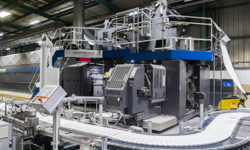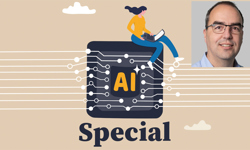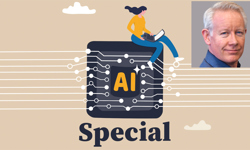
Q: What innovative things did you see from publishers during the pandemic period?
A:
A rapid switch to virtual events was an obvious move for many. Others responded to the clamour for trusted information by devoting additional space to Covid-related advice and public health which was socially significant and actually extended the reach of print reach in many cases. We saw a lot of work on brand extensions and how publishers were able to harness the strength of their community to share views, create new interactions and revenue streams from those touch points. Those interactions also helped to inform a more targeted distribution strategy which reduced wastage on potentially superfluous copies.Q: What are printers doing to make their operations more environmentally friendly?
A:
Waste reduction is a constant as technology evolves and monitoring and awareness improve, but there’s a broader scope than ever as we recognise the part we have to play in making the world a better place. Printers are now able to access more information on the impact of our activities and information on how to reduce it. What’s exciting is how rapidly the range of alternatives is expanding. Innovative chemicals, renewable energy, electric deliveries are some of the most prominent right now, but there’s always something new emerging on the horizon.Q: What advice would you give publishers who are looking to make their publication more impactful?
A:
Invest in your images. A professionally retouched full bleed image can transform the look and feel of your publication. Take another look at paper. Ask your printer what alternatives they may have to highlight certain sections or adverts. Printers will generally be happy to supply swatches and dummies to help you share ideas in your team. Talk to your printer – discuss your objectives and aspirations – invite them to suggest special cover finishes, trim sizes and so on – they will almost certainly have ideas that you weren’t aware of.Q: How can print and digital work better together?
A:
By acknowledging that neither can replace nor replicate the other. Print leaves a lasting impression with a tactile, visually rich unencumbered experience but digital is invaluable in its ability to provide immediate news and strengthen a sense of community by engaging directly with readers. Let’s not forget either that data gathered by digital helps to make print more relevant and agile, providing insight and feedback to shape future content and audience.Q: What type of content works better in print than on screen?
A:
Lavish, visually rich longform writing with covetable content. The kind of thing readers love to read and discuss, quite literally – physically together, then keep. Massive opportunities can be created by using intelligent distribution and careful placement creating inextricable associations with special times and places. Whether it’s a high end magazine in a hotel lobby or a theatre programme pored over retrospectively, the printed article as a takeaway item creates a massive long term impact by comparison with digital.Q: In an increasingly competitive industry, what are printers doing to hone their offering?
A:
Putting every link of the production chain under a metaphoric microscope and reassessing what is achievable, factoring in each and every new development from their partners. Technological change is accelerating and there are more opportunities than ever to advance with improvements which save the end customer time and money. Many are also partnering with distribution vendors to offer a joined-up approach which eliminates pressure points for the brand owner.Q: What’s in the pipeline from Manson Group?
A:
We will be listening intently to clients as many relaunch on exit from the pandemic. There’s a new challenge hitting us with imminent paper price rises, so I anticipate we’ll be helping clients find ways to mitigate this impact by identifying possible savings in other areas. With a refreshed team, we are focused on getting a new generation into the print industry with our apprenticeship programme. We’re also finding new ways to streamline the flow of work using evolving communications technologies. As we saw during the height of the pandemic, remote working where possible offers great potential in terms of flexibility and productivity.
About us
The Manson Group produces publications for some of the UK’s smallest, and largest publishers. Established by our current owners in 1969, and based in Hertfordshire, we are setting our sights on the future by investing in a number of green initiatives, placing sustainability at the heart of our future development.
Email: enquiries@mansongroup.co.uk
Twitter: @mansongroup
LinkedIn: linkedin.com/company/the-manson-group










